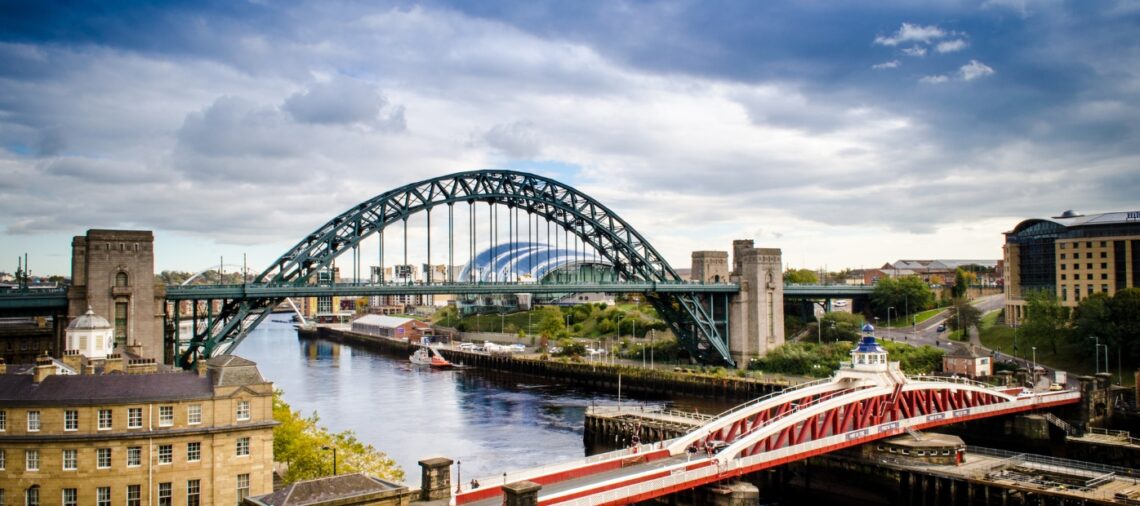Newcastle upon Tyne (or, simple, Newcastle), a gem in the North East of England, is not your typical tourist hotspot; it’s more like a party where everyone’s invited, and the host forgot to mention it’s a costume party. Imagine strolling down Grey Street, a catwalk where historic Georgian architecture meets the UK’s most enthusiastic hen and stag parties. You might be there for the culture, but let’s face it, you’re also there to see a group of lads dressed as the Spice Girls. The city blends the old and the new, the sophisticated and the slightly tipsy. It’s where the Tyne Bridge winks at the Millennium Bridge, saying, “I was Instagrammable before Instagram.”
But Newcastle’s charm doesn’t stop at its vibrant street scenes. It’s a place where the local dialect, Geordie, is considered by many to be a language of its own—charming, incomprehensible, and used freely by friendly locals who’ll assure you that ‘howay, man!’ is a term of endearment. And let’s not forget the food! Stottie cake might sound like something you’d use to fix a flat tyre, but it’s actually a delicious, doughy delight that’s best enjoyed after exploring the city’s countless pubs and bars. Visiting Newcastle is like going to a friend’s house and finding out they’re the life of the party—unexpected, unforgettable, and you can’t wait to go back. Let’s discover the best tourist attractions in Newcastle!
Top 10 places to see in Newcastle upon Tyne, UK
Newcastle Castle Keep
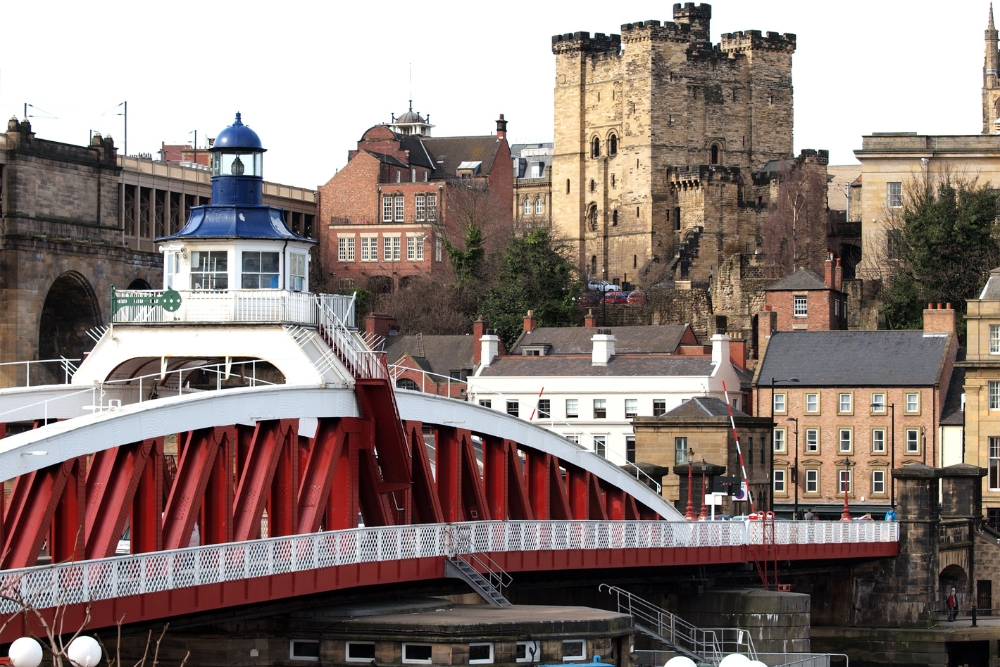
Are you tired of the same old tourist spots? Looking for an adventure that will leave you laughing and wanting more? Well, have I got a castle for you! It’s none other than the legendary Newcastle Castle Keep!
Newcastle Castle, the medieval stronghold in Newcastle upon Tyne, England, stands on the grounds of an original fortress, the city’s namesake. The most significant remnants are the Castle Keep, a primary stone tower, and the Black Gate, its robust gatehouse.
Dating back to Roman times, this site was initially a fort and settlement named Pons Aelius (translating to ‘Hadrian’s bridge’), overseeing a bridge across the River Tyne. In 1080, Robert Curthose, William the Conqueror’s eldest son, constructed a wooden motte and bailey castle on this Roman site. This ‘New Castle upon Tyne,’ built after Curthose campaigns against Malcolm III of Scotland, was later replaced by Henry II, who erected the stone Castle Keep from 1172 to 1177. Subsequently, Henry III added the Black Gate between 1247 and 1250. Today, nothing of the original Roman fort or the motte and bailey castle survives above ground. The Keep is recognized as a Grade I listed building and a Scheduled Ancient Monument.
The Castle Keep and Black Gate are older than the Newcastle town wall, whose construction began around 1265 and did not encompass these structures. Located at the heart of Newcastle, near the east of Newcastle station, these historical edifices are separated by a 75-foot (23 m) space, almost entirely bridged by the railway viaduct carrying the East Coast Main Line from Newcastle to Scotland.
Quayside and Tyne Bridge
In the heart of the bustling city of Newcastle upon Tyne lies historic gems that have stood the test of time – the Quayside and Tyne Bridge, one of the mai tourist attractions in Newcastle. These iconic landmarks have witnessed the ebb and flow of the city’s fortunes and have become symbols of its rich maritime heritage.
Stretching along the banks of the River Tyne, the Quayside has been a hub of activity for centuries. As early as the 12th century, the area was a thriving commercial port, bustling with merchants and traders worldwide. The Quayside was a gateway for goods flowing in and out of the city, becoming a vital link in the global trade network.
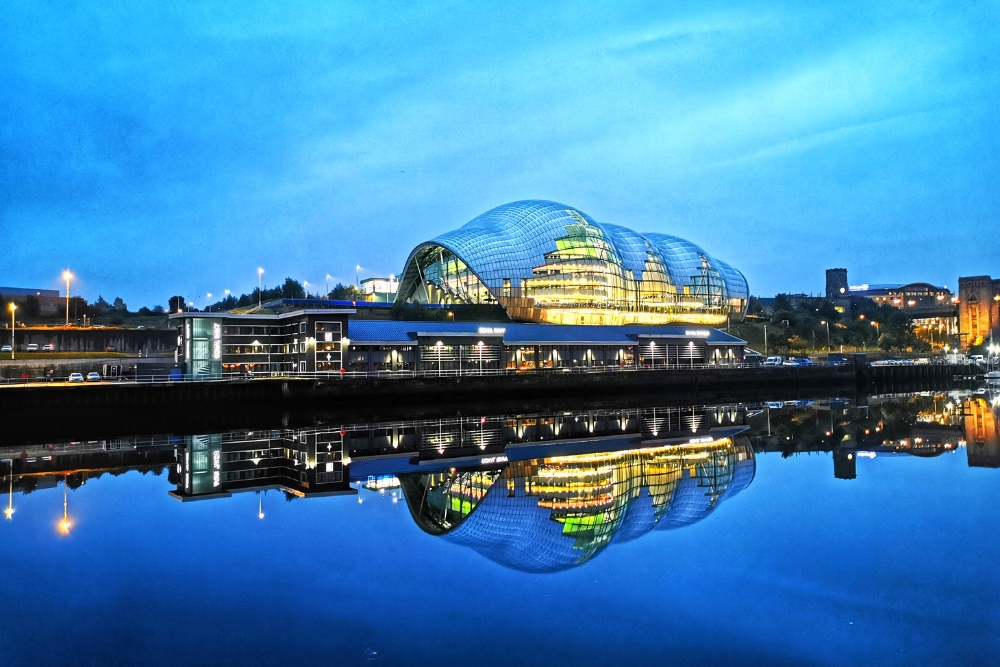
Over time, the Quayside underwent numerous transformations, adapting to the city’s changing needs. In the 19th century, it became a hub for shipbuilding and engineering, with grand factories and warehouses lining its streets. The Industrial Revolution brought unprecedented growth and prosperity to Newcastle, and the Quayside became a testament to the city’s industrial might.
One of the most remarkable features of the Quayside is the Tyne Bridge, an architectural marvel that has become an iconic symbol of Newcastle. Designed by engineering genius Robert Stephenson and opened in 1928, the Tyne Bridge is a testament to human ingenuity and determination. Its striking design and distinctive river arches have captivated locals and visitors alike for generations.
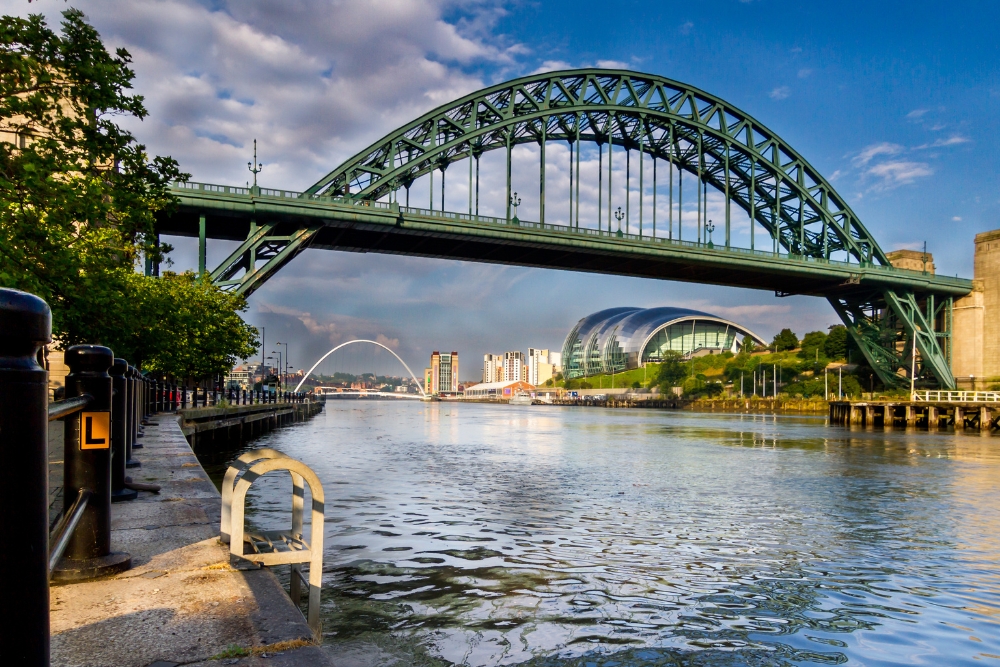
The construction of the Tyne Bridge was a monumental undertaking. It required the demolition of over 500 properties and relocating thousands of residents. However, the bridge’s completion marked a new era for the city, connecting the once-separate towns of Newcastle and Gateshead and ushering in a new wave of prosperity and development.
The Quayside and Tyne Bridge have hosted significant events and milestones in Newcastle’s history. During World War II, the Tyne Bridge symbolized resilience and defiance, surviving numerous bombing raids unscathed. Its sturdy structure became a beacon of hope for the city’s residents during some of its darkest hours.
The Quayside has undergone a remarkable transformation in recent years, evolving into a vibrant cultural and entertainment hub. The once-abandoned warehouses have been repurposed into trendy bars, restaurants, and art galleries, breathing new life into the area. The Quayside Market, held every Sunday, attracts locals and tourists alike, offering a delightful array of local produce and crafts.
Today, the Quayside and Tyne Bridge remain integral to the identity of Newcastle upon Tyne. They stand as a testament to the city’s rich history and serve as a reminder of its resilience and adaptability. As visitors stroll along the Quayside, taking in the breathtaking views of the river and the majestic Tyne Bridge, they can’t help but feel a sense of awe and reverence for this historic corner of the world.
The Great North Museum: Hancock
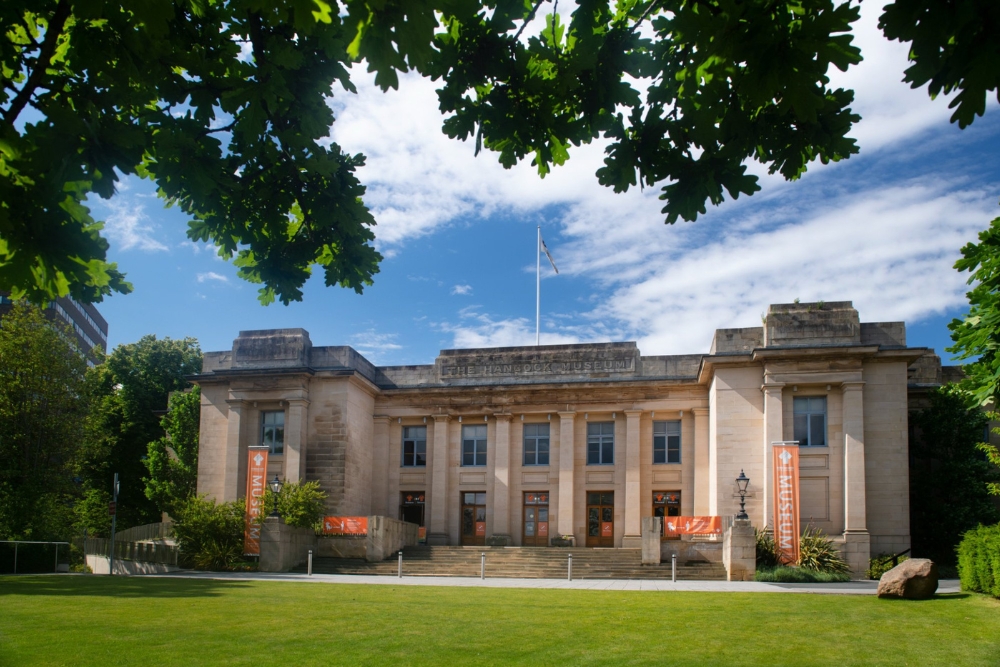
The Great North Museum: Hancock is a captivating destination where history comes to life and knowledge is embraced with open arms. Situated in the heart of Newcastle, this museum offers a rich and diverse collection that will pique your curiosity.
Transport yourself through time as you explore the various exhibits on display. Witness the grandeur of ancient civilizations, from the Roman Empire to the enigmatic wonders of Egyptian mummies. Delve into the remarkable realm of the animal kingdom and marvel at its diversity. The museum’s extensive collection covers various topics, providing a unique opportunity to engage with history firsthand.
But this museum is not merely a place for passive observation. Interactive displays and hands-on activities offer a truly immersive experience. Engage in workshops, join guided tours, or attend lectures to deepen your understanding and make the most of your visit.
For those seeking adventure and knowledge in Newcastle, a trip to The Great North Museum: Hancock is a must. Immerse yourself in the rich history, fascinating exhibits, and educational experiences that await you. Don’t miss out on this top tourist attraction, where you can enhance your knowledge and quench your thirst for discovery.
St. James’ Park Stadium
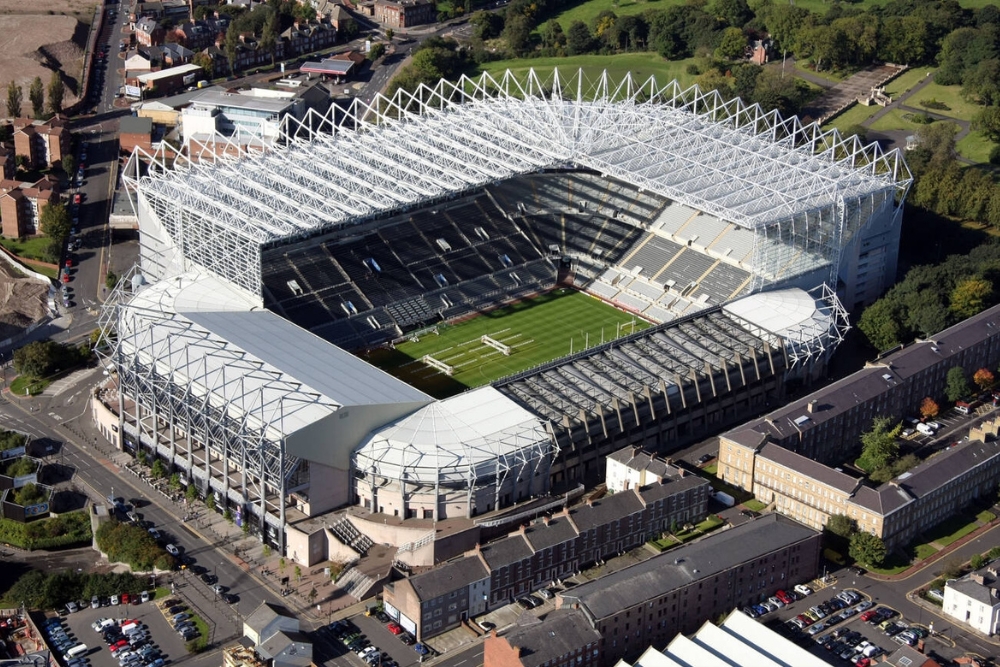
Located just a stone’s throw away from The Great North Museum: Hancock, lies St. James’ Park Stadium, eagerly awaiting to transport you into the captivating realm of football. This iconic sporting arena serves as the hallowed grounds of the esteemed Newcastle United Football Club and stands as an absolute must-visit for any avid sports enthusiast exploring the vibrant city of Newcastle. Here, we present four compelling reasons why St. James’ Park Stadium should firmly claim the top spot on your list of Newcastle attractions:
- Immerse yourself in a tapestry of football history: With a storied past that traces its roots back to the year 1892, St. James’ Park Stadium stands as a living testament to the glorious heritage of the beautiful game. Embark on a guided tour that will lead you on a fascinating journey through time, unveiling the indelible imprints left behind by legendary players who graced its hallowed turf, as well as the gripping tales of the historic matches that have unfolded within its magnificent confines.
- Experience an electrifying atmosphere like no other: When match days arrive, St. James’ Park Stadium metamorphoses into a pulsating cauldron of raw energy and unwavering passion as thousands of devoted fans rally behind their beloved team. Immerse yourself in the infectious fervor and witness firsthand the awe-inspiring atmosphere that can only be found within the sacred walls of a football stadium.
- Behold breathtaking panoramic vistas of the city: As you find yourself within the stadium’s boundless embrace, be enchanted by awe-inspiring vistas that offer a mesmerizing perspective of Newcastle’s majestic skyline. Take a moment to drink in the sheer beauty of your surroundings, all while reveling in the exhilaration of the game unfolding before your eyes.
- Embark on a captivating journey through the Newcastle United Museum: Nestled within the very heart of the stadium lies a treasure trove of sporting memorabilia and captivating exhibits that pay homage to the storied history of the club. Immerse yourself in the triumphs and tribulations that have shaped the club’s legacy, relive awe-inspiring moments, and gain a fascinating glimpse into the life of a professional footballer.
Whether you find yourself captivated by the allure of football or simply seeking an exhilarating and immersive experience, St. James’ Park Stadium stands as an unrivaled attraction that effortlessly captures the essence and spirit of Newcastle. Prepare to be enthralled by the pulsating excitement of the game and the vibrant atmosphere that envelops this iconic venue.
BALTIC Centre for Contemporary Art
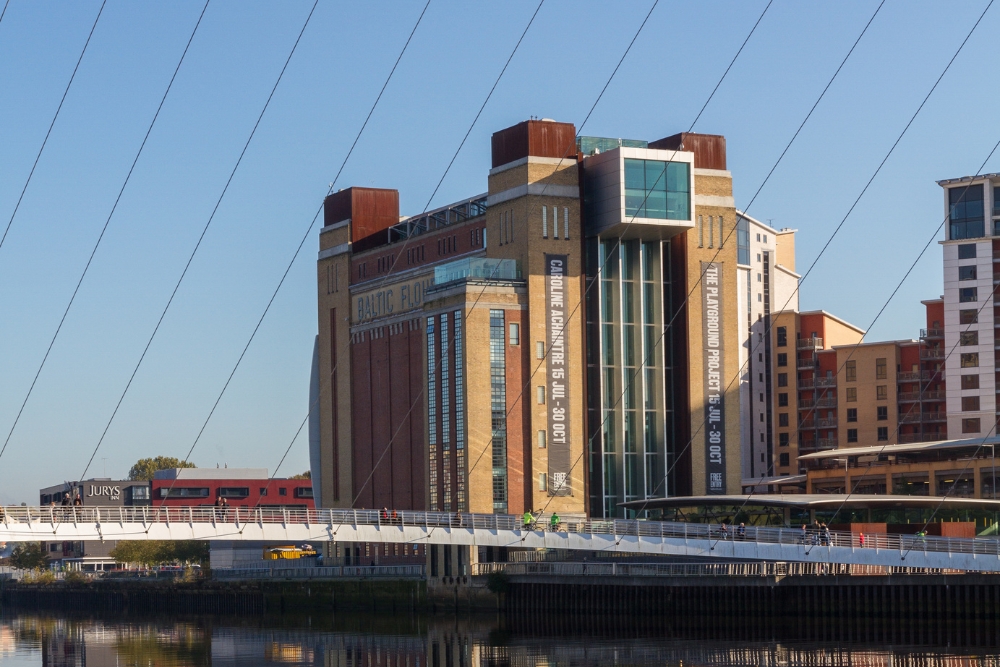
The BALTIC Centre for Contemporary Art is a must-visit museum for art enthusiasts and tourists alike and one of the main tourist attractions in Newcastle. Located on the picturesque banks of the River Tyne in Gateshead, England, this renowned institution offers visitors a unique and exciting experience.
One of the most striking features of the BALTIC Centre is its architecture. Housed in a converted flour mill, the museum has retained its industrial charm while incorporating modern design elements. The building’s vast spaces and large windows allow natural light to flood in, creating a dynamic and vibrant atmosphere. This combination of history and contemporary aesthetics sets the stage for a captivating journey through contemporary art.
As visitors step inside the BALTIC Centre, they are greeted by a diverse range of thought-provoking exhibitions. The museum showcases an impressive contemporary art collection from established and emerging artists. From paintings and sculptures to multimedia installations and performance art, there is something to captivate every art lover’s imagination.
The museum’s curators constantly strive to bring cutting-edge and relevant works to the public. The exhibitions are carefully curated, often exploring societal issues, cultural identity, and environmental concerns. This approach ensures that each visit to the BALTIC Centre is a unique and thought-provoking experience, sparking conversations and challenging preconceived notions.
In addition to the exhibitions, the BALTIC Centre offers a range of educational programs and events. These include artist talks, workshops, and guided tours that provide deeper insights into the artists’ creative processes and the context of their works. The museum also collaborates with local schools and communities, fostering engagement and encouraging creativity in the wider community.
The BALTIC Centre boasts excellent facilities to enhance visitors’ experiences. The museum’s top-floor restaurant offers panoramic views of the Newcastle-Gateshead Quayside, allowing guests to enjoy a delicious meal while taking in the breathtaking surroundings. The museum shop is also a treasure trove of contemporary art books, prints, and unique souvenirs, making it a perfect place to find a special memento of one’s visit.
Overall, the BALTIC Centre for Contemporary Art is a cultural gem that any art enthusiast or curious traveler should not miss. Its stunning location, thought-provoking exhibitions, and commitment to community engagement make it a dynamic and inspiring destination. Whether one is a seasoned art connoisseur or simply looking to expand their cultural horizons, the BALTIC Centre promises an enriching and memorable experience for all.
Jesmond Dene Park
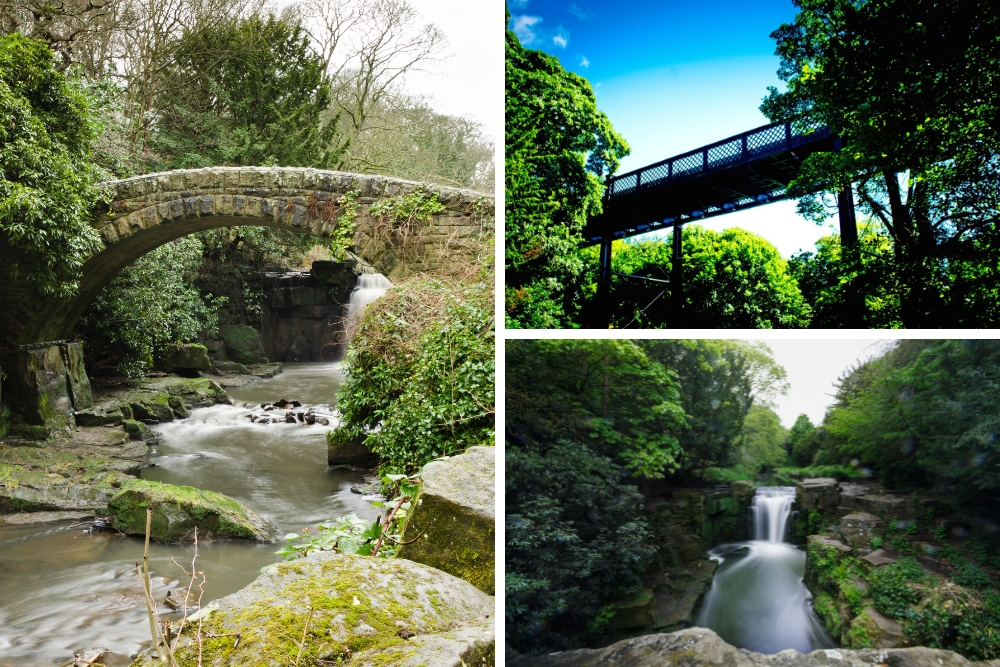
Jesmond Dene Park, nestled in the heart of Newcastle upon Tyne, holds a wealth of historic significance that has been meticulously documented over the years. This picturesque green haven, spanning 55 acres, is a popular recreational spot and a testament to the city’s rich heritage.
Dating back to the 19th century, industrialist Sir William Armstrong gifted Jesmond Dene Park to the people of Newcastle in 1883. Armstrong, a renowned engineer and inventor, was passionate about creating green spaces for the public to enjoy amidst the city’s rapid industrialization. His vision was to provide a sanctuary where people could escape the hustle and bustle of urban life.
The park’s name, Jesmond Dene, is derived from the Old English word “denu,” meaning valley, and refers to the deep, wooded ravine that cuts through the landscape. This natural feature was a key factor in Armstrong’s decision to acquire and transform the land into a public park.
Jesmond Dene Park quickly became a favorite retreat for locals and visitors alike with its meandering paths, cascading waterfalls, and lush vegetation. Its scenic beauty attracted many prominent figures of the time, including Queen Victoria and Prime Minister William Gladstone, who sought solace and inspiration within its tranquil surroundings.
In addition to its natural splendor, Jesmond Dene Park boasts several notable architectural and historical features. One such landmark is the iconic Armstrong Bridge, named after Sir William. This Grade II listed structure, completed in 1878, spans the Ouseburn River and serves as a picturesque gateway to the park. The bridge’s elegant design, with its stone arches and decorative ironwork, reflects the Victorian era’s emphasis on both functionality and aesthetics.
Another notable feature within the park is the historic water mill, known as Jesmond Dene Mill. Built in the mid-19th century, the mill provided flour for the surrounding area and was an integral part of the local community. Although it is no longer operational, the mill reminds of Newcastle’s industrial past and its important role in the city’s economy.
Over the years, Jesmond Dene Park has undergone various improvements and additions, all to enhance the visitor experience while preserving its historical essence. The park’s management has worked tirelessly to maintain its natural beauty, ensuring it remains a cherished green space for generations.
Today, Jesmond Dene Park continues to captivate visitors with its enchanting atmosphere and rich history. Whether strolling along its winding paths, picnicking by the river, or simply immersing oneself in its peaceful ambiance, this historic park stands as a testament to the enduring allure of Newcastle’s past.
Victoria Tunnel
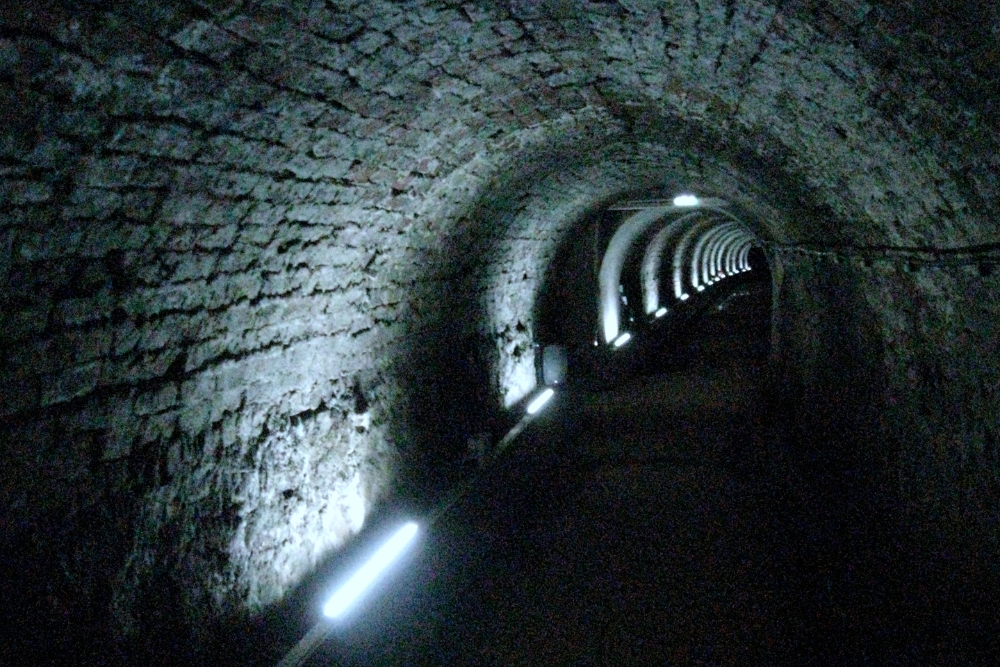
The Victoria Tunnel in Newcastle is a must-visit destination for history enthusiasts and curious travelers and another one of the most beautiful tourist attractions in Newcastle. This unique underground tunnel dates back to the 19th century and served as a vital transportation route for coal during the Industrial Revolution. Today, it offers visitors an immersive experience into the city’s past. The tunnel was originally built in 1842 and stretches for two miles, running from the Town Moor to the River Tyne. It played a significant role during World War II as an air-raid shelter, providing refuge for thousands of Newcastle residents during the bombings.
From a practical standpoint, a visit to the Victoria Tunnel is a fascinating and informative experience. Guided tours are available, providing visitors with insights into the tunnel’s historical significance and the lives of those who used it. Expect to learn about the mining industry, the impact of the Industrial Revolution, and the realities of life during wartime. The tour takes you through the tunnel’s dimly lit passages, showcasing remnants of its past, such as original track beds, evidence of air-raid precautions, and even graffiti left behind by those who sought shelter within its walls.
Exploring the Victoria Tunnel is an opportunity to step back and gain a deeper understanding of Newcastle’s history. Walking through the tunnel, you can’t help but be captivated by the stories around you. The knowledgeable guides bring the past to life, sharing anecdotes and tales that vividly depict what life was like in the city during different eras.
The Discovery Museum
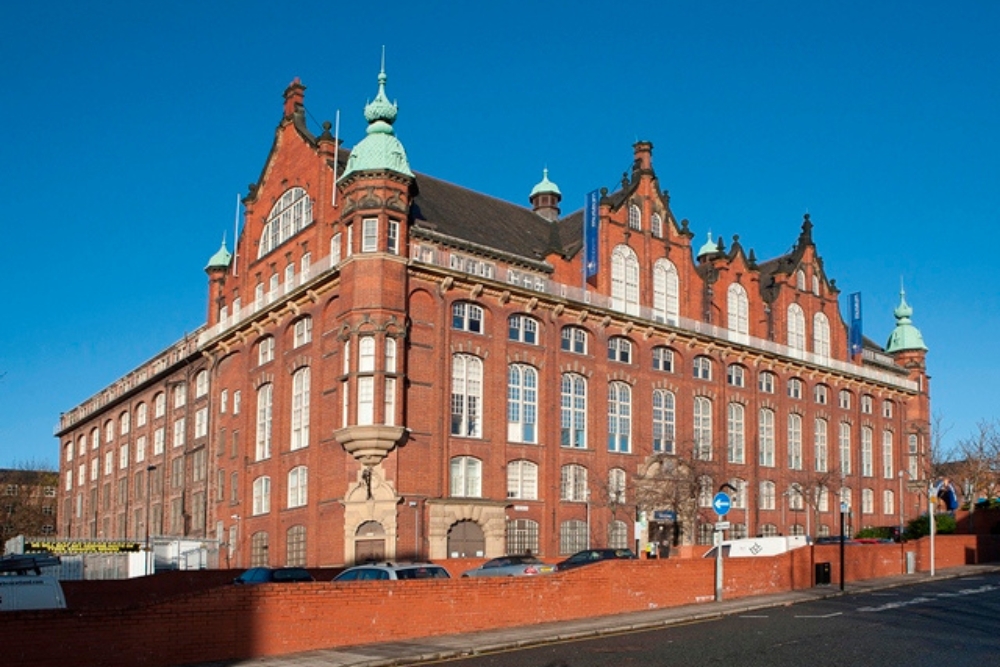
Throughout the places to see in Newcastle, the Discovery Museum in Newcastle is a must-visit attraction for tourists seeking to delve into the rich history and cultural heritage of the city. Located in the heart of Newcastle upon Tyne, this museum offers an immersive and interactive experience that is perfect for visitors of all ages.
As you step into the museum, you are greeted by a stunning blend of modern architecture and historic exhibits. Housed in the former Co-operative Wholesale Society (CWS) building, the museum showcases the city’s industrial past and its transformation into a vibrant cultural hub.
One of the highlights of the Discovery Museum is the Turbinia, a revolutionary steam-powered ship that was once the fastest vessel in the world. Visitors can explore the ship and learn about its groundbreaking engineering and its significant role in maritime history. The interactive displays allow you to understand the mechanics and power behind this incredible feat of engineering.
Step back in time and immerse yourself in the story of Newcastle’s industrial revolution. The museum takes you on a journey through time, showcasing the city’s role in the development of steam engines, locomotives, and electric light. Through fascinating exhibits and informative displays, visitors can gain a deep understanding of the technological advancements that shaped not only Newcastle but the world.
The Discovery Museum also offers a glimpse into the lives of the people who lived and worked in the region. From the reconstruction of a Victorian street to displays on local industries such as coal mining and shipbuilding, the museum provides a comprehensive picture of daily life during different eras.
One of the most popular attractions within the museum is the Science Maze, an interactive gallery that brings science and technology to life. Visitors can engage in hands-on experiments, explore the wonders of physics, and even try their hand at being an inventor. It’s a fantastic experience for both children and adults, offering a fun and educational way to explore scientific concepts.
For those interested in local history, the museum’s Tyne and Wear Archives and Museums collection is a treasure trove of information. With over 200,000 historical photographs, documents, and artifacts, the collection offers a fascinating insight into the region’s past. Whether you’re researching your family history or simply curious about the development of Newcastle, the Discovery Museum’s archives provide a wealth of resources.
To complete your visit, make sure to stop by the museum’s café and gift shop. The café offers a range of delicious treats, perfect for a quick snack or a leisurely meal. The gift shop is a great place to find unique souvenirs, books, and locally made crafts to commemorate your visit.
Grey’s Monument
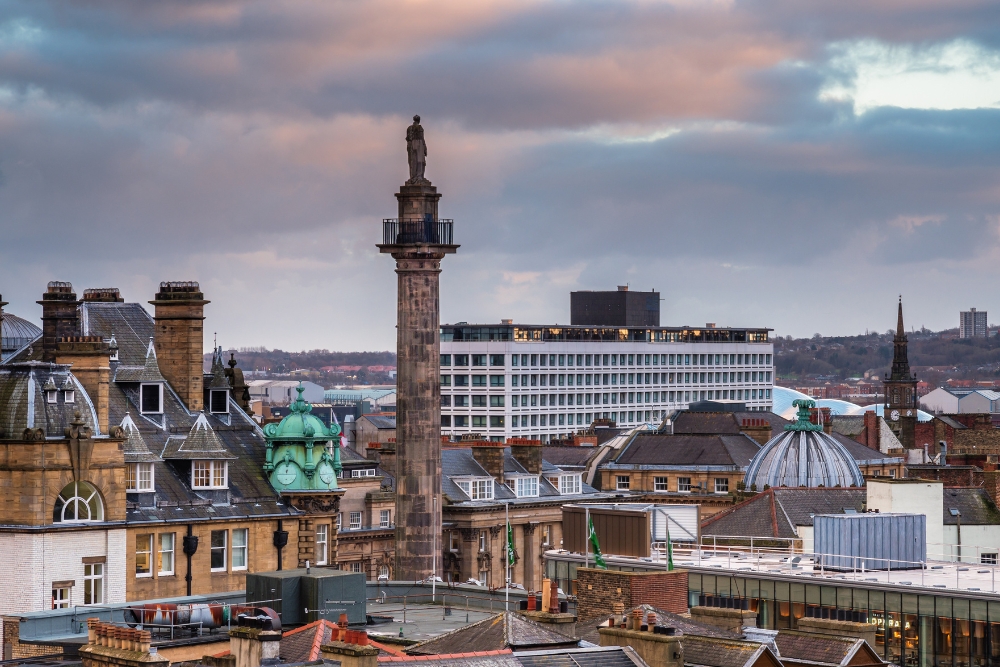
Perched atop the vibrant city center of Newcastle, Grey’s Monument is a testament to the legacy of the esteemed 2nd Earl Grey, a prominent statesman and former British Prime Minister during the 19th century. This majestic monument, one of the best places to see in Newcastle, reaching an impressive height of 40 meters, dominates the city’s skyline, offering unparalleled panoramic views of the bustling streets below and the picturesque surroundings that stretch to the coast.
Constructed in 1838, Grey’s Monument is a captivating piece of architecture crafted from timeless and elegant sandstone. Its grandeur and historical significance make it an irresistible attraction for history enthusiasts and curious sightseers. As you ascend the 164 steps to reach the pinnacle, prepare to be mesmerized by the breathtaking vistas that unfold before your eyes. On clear days, the view extends far beyond the city limits, granting you a glimpse of the iconic Angel of the North and the majestic coastline.
At the base of Grey’s Monument, a striking statue of Earl Grey himself stands proudly, overlooking the cityscape that he helped shape. This iconic landmark also serves as a popular gathering spot for locals and visitors, thanks to its central location and vibrant atmosphere.
Grey’s Monument is a treasure trove of history and architectural splendor, encapsulating the spirit of Newcastle. This National Geographic-worthy experience will transport you back in time, allowing you to immerse yourself in the region’s rich heritage. Discover the fascinating stories and facts surrounding this magnificent monument and unlock a deeper understanding of Newcastle’s past and present.
The Sage Gateshead
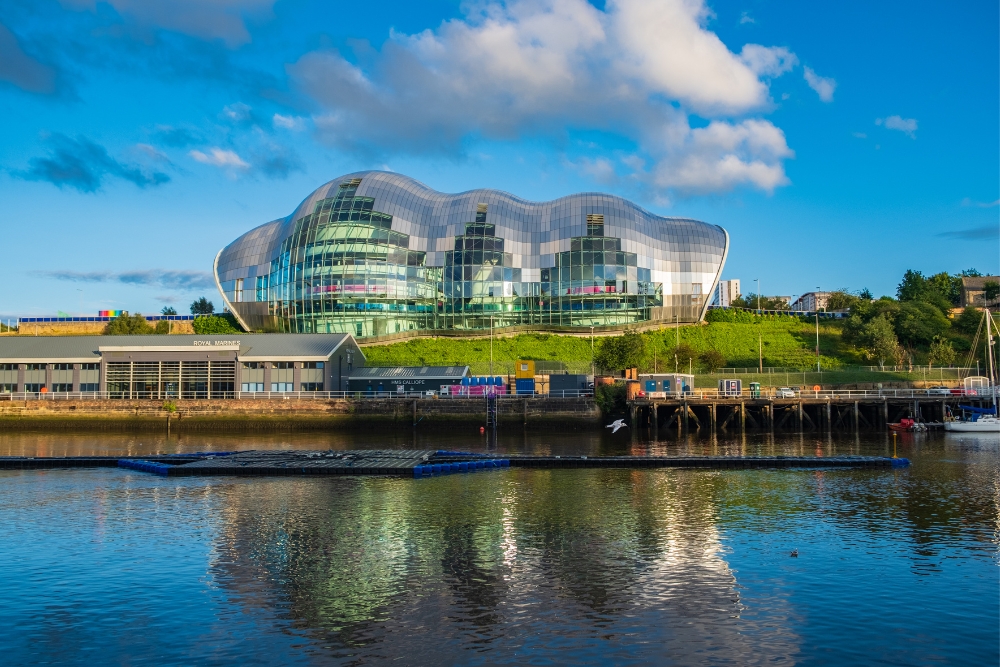
The Sage Gateshead is a renowned music venue located in Newcastle, England. Designed by Foster and Partners, it was opened to the public in 2004 and has since become an iconic landmark in the city. The building’s unique design features a curvaceous glass and stainless steel exterior, resembling a ship or a shell, which beautifully reflects the surrounding area and the River Tyne. The interior of the Sage Gateshead is equally impressive, boasting world-class acoustics that have made it a premier destination for both classical and contemporary music performances.
The Sage Gateshead is not only a concert hall, but also a center for music education and outreach. It houses three performance spaces, including a 1,700-seat concert hall, a 400-seat theater, and a smaller rehearsal and performance space. These venues cater to a wide range of musical genres, from classical orchestras and opera to jazz, folk, and contemporary music. The Sage Gateshead is home to the Royal Northern Sinfonia, the UK’s only full-time chamber orchestra, and frequently hosts renowned international artists as well. In addition to its concert programming, the Sage Gateshead offers a variety of music education programs for people of all ages and abilities, aiming to inspire and engage the local community in the world of music.
Overall, the Sage Gateshead is an architectural masterpiece that has become a symbol of cultural excellence in Newcastle. Its striking design and exceptional acoustics provide an outstanding setting for world-class music performances, attracting audiences from near and far. Furthermore, the venue’s commitment to music education and community outreach ensures that it plays a vital role in nurturing talent and creating opportunities for people to experience and participate in the transformative power of music.
5 interesting facts about Newcastle
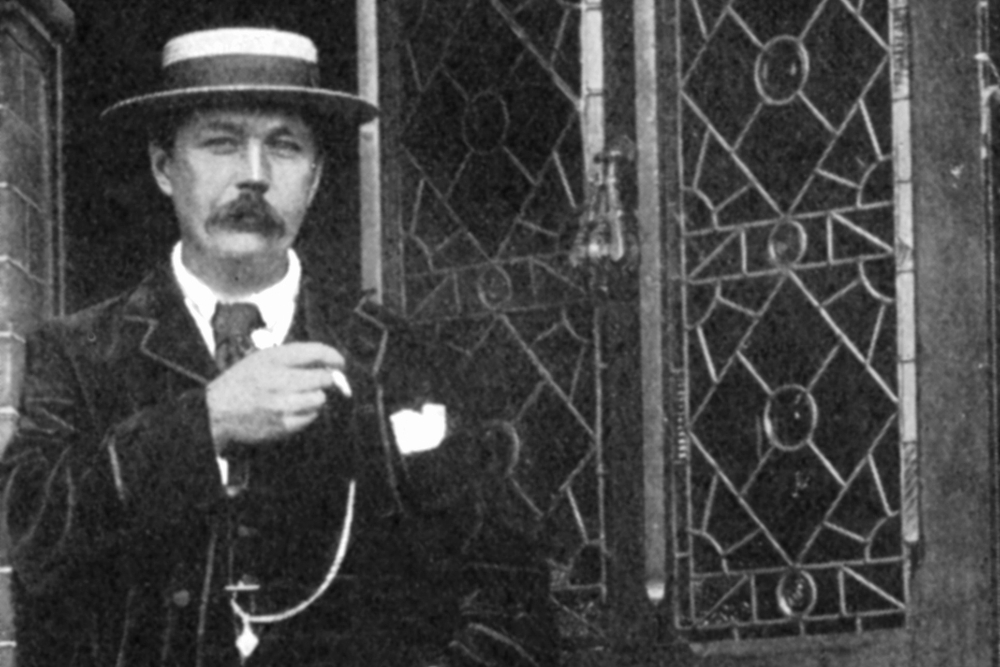
Journey through the captivating depths of Newcastle, a city steeped in mystery and allure. Here, history intertwines with innovation, revealing a tapestry of intriguing and thought-provoking facts that will leave you spellbound.
1 The Electric Lightbulb. Did you know that Newcastle proudly houses the world’s inaugural electric lightbulb? In 1879, the ingenious Joseph Swan illuminated his home with this groundbreaking invention, forever revolutionizing how we perceive light.
2 Sherlock Holmes. Delve into the annals of literary history, for Newcastle shares a remarkable connection with the iconic detective Sherlock Holmes. Sir Arthur Conan Doyle, the mastermind behind this enigmatic character, once immersed himself in the study of medicine at the esteemed University of Newcastle. It is rumored that the city’s ambiance and stories inspired Doyle’s captivating tales.
3 Rowan Atkinson. Undoubtedly, you would easily identify him as one of the cherished figures from your younger years. Indeed, Rowan Atkinson hails from Newcastle. This vibrant city is also home to other renowned personalities like Cheryl Cole and the duo Ant & Dec.
4 The Roman Wall. Designated as a UNESCO world heritage site, the remnants of the wall constructed by the Romans in AD 122 are visible throughout the city. Although mainly situated underground, portions of the wall can unexpectedly be observed in various locations. Keep an eye out for these fragments on bustling shopping streets and even within residential areas!
5 The Geordies. Newcastle closed its gates to the Scottish Jacobites as they marched through the North of England during the rebellion. There are two theories regarding the origin of the nickname ‘Geordies’ for the townspeople. One suggests that it stemmed from their allegiance to King George II, while the other theory associates it with George Stephenson, an inventor from Newcastle known for creating the miner’s lamp.
When is the best period to visit Newcastle?

The summer months in Newcastle offer an ideal time to experience the city’s vibrant atmosphere and indulge in a kaleidoscope of cultural events and outdoor festivities. Here are four compelling reasons why summer is the ultimate period to explore this captivating city:
- Festivals Galore: Newcastle truly comes alive during the summer, hosting a multitude of festivals that cater to all interests. From the renowned Newcastle Food and Drink Festival to the exuberant Newcastle Pride Festival, there is an abundance of vibrant celebrations to captivate visitors. Immerse yourself in the local culture and revel in the energetic ambiance that these festivals bring.
- Outdoor Adventures: With its stunning coastline and picturesque countryside, Newcastle offers a plethora of exhilarating outdoor activities during the summer months. Take a leisurely stroll along the Quayside, where the city’s rich history and modern architecture intertwine. Explore the breathtaking Tynemouth Beach, known for its golden sands and captivating views. For nature enthusiasts, venture into the nearby Northumberland National Park, where scenic hiking trails await. The possibilities for adventure are truly endless.
- Extended Daylight: Embrace the extended daylight hours that the summer brings in Newcastle. With more time to explore, you can leisurely wander through the city’s charming streets, savoring the allure of its eclectic blend of historical and contemporary landmarks. Indulge in al fresco dining at the city’s vibrant outdoor cafes, or marvel at the mesmerizing vistas from the iconic Millennium Bridge. Let the longer days unveil the true essence of Newcastle’s beauty.
- Mild and Pleasant Weather: Newcastle experiences mild temperatures during the summer, providing the perfect climate for exploration. Leave behind the discomfort of extreme heat or cold, and embrace the city’s many attractions in optimal conditions. Don’t forget to pack your sunglasses and sunscreen as you embark on your adventure through Newcastle’s enchanting streets.
In the summer months, Newcastle truly shines as a destination that seamlessly blends history, culture, and natural beauty. Discover the charm of this captivating city and create memories that will last a lifetime.
Final Thoughts
In conclusion, visiting Newcastle Upon Tyne is an unforgettable experience filled with remarkable sights and captivating experiences. With its rich history and vibrant culture, you will discover some of the best tourist attractions in Newcastle. From the iconic Tyne Bridge to the magnificent Newcastle Castle and the vibrant Quayside, visitors are treated to a plethora of architectural marvels and stunning landscapes.
Furthermore, the city’s renowned museums, such as the Great North Museum and the Discovery Museum, provide a fascinating insight into the region’s heritage and art. For those seeking a taste of the local culture, exploring the lively Grainger Town district, indulging in the vibrant nightlife, and enjoying the bustling street markets are must-do activities. Overall, Newcastle is a city that effortlessly blends history, culture, and natural beauty, making it a top destination for any avid traveler.

